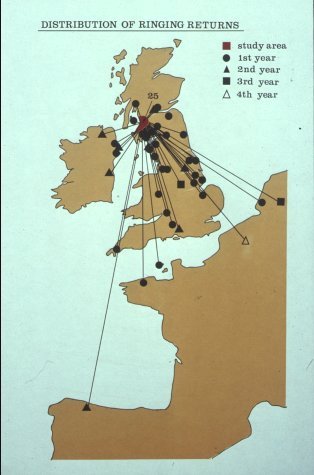Kestrels For
Company
available in bookstores
Satellite tagging of young kestrels
Annual kestrel summaries - Scotland

Summary of 25 years of Ayrshire Data 1979-2003
Based upon 660 breeding records where the outcome was known.
1. PRODUCTIVITY
- Nesting territory occupancy ranged annually from 44 to 85%.
- Productivity was high in line with other small/medium sized raptors but there was considerable annual variation in output.
- Clutch sizes
ranged from 3 to 8, the vast majority being in the 4 – 6 bracket with rarely
7s and one . In 533 clutches the average clutch size was 5 eggs.

- 87% of the nest failures occurred at the pre laying and clutch stage, mostly due to desertion.
- The kestrel was single brooded but occasionally a pair relayed a clutch of eggs if the failure was at an early stage of the incubation period.
- The earliest egg laying date recorded was 17 March but normally very few hens laid in that month. The majority of first egg laying dates were in the second half of April. Few clutches were started after mid-May.
- 74% of eggs laid hatched successfully.
- Brood survival in the nest is exceptionally high ranging from 73 – 100% annually. Average 88%.
- Early breeders produce larger clutches and rear more young than pairs which begin the nesting cycle late.
- Over the period the average young produced per nesting attempt (including failures) was 2.9% of nesting attempts failed.
- Consistent spells
of good or bad weather had a major effect on productivity.

- In upland areas there was a direct correlation between low vole years and lower production of fledged young and peak vole years when productivity was high.
2. DISPERSAL & MIGRATION
-
60% of young birds die in their first winter (based upon 1800 pullens ringed).

-
There was a random dispersal in late summer followed by a predominantly SSE migration, birds reaching the south of England by October and the north of Europe by November.
-
One bird flew 3,076km to Tenerife by late October and was killed when it flew into a pylon.
